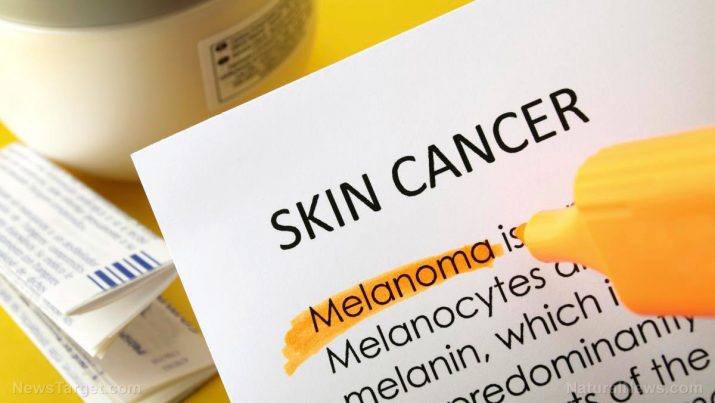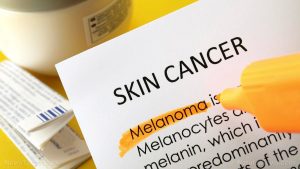
Superficial spreading melanoma – causes, side effects and treatments at NaturalPedia.com
Wednesday, July 11, 2018 by Carol Anderson
http://www.naturalpedia.com/superficial-spreading-melanoma-causes-side-effects-and-treatments-at-naturalpedia-com.html

Superficial spreading melanoma is a type of skin cancer and is the most common among its group. It first appears and grows at the top layer of the skin before further damaging the inner layers of the skin.
This condition can affect anyone, although, it is not that common among children. According to statistics, superficial spreading melanoma accounts for 70 percent of the total cases of skin cancers.
Superficial spreading melanoma may appear as freckles which makes it hard to identify it sometimes. To help patients distinguish it, the “ABCDEs” of skin cancer is used, which stands for:
- Asymmetry – Two sides don’t match up.
- Border – The outline is irregular in shape.
- Color – May appear red, black or blue.
- Diameter – The diameter is larger than a pencil’s eraser.
- Evolving – Cancerous patches change in shape, size, and color.
Known risk factors and symptoms of superficial spreading melanoma
The following types of people are more at risk of developing superficial spreading melanoma:
- People who have fair skin, blue or green eyes, or red or blonde hair
- People who live in places with a mostly sunny climate
- People who live at high altitude places
- People who are exposed to too much sunlight
- People who have head one or more blistering sunburns
- People who often use tanning devices
- People who have a family history of melanoma
- People with a weakened immune system
The most common symptom associated with superficial spreading melanoma is the appearance of a new mole or a change in an existing mole. It is essential to look out for the following if you suspect the development of the condition.
- A mole that’s growing in size
- A mole that changes shape
- A mole which color is changing
- Moles that sometimes bleed
- Moles that have become crusty
- A mole that has become itchy, or one that feels sore
Once you confirm the symptoms, immediately seek the help of medical experts.
Body systems affected by superficial spreading melanoma
There is a chance that melanoma may recur even after a healthcare provider has cleared a patient. This is because previous patients have an increased chance of developing it again or other types of skin cancer.
Moreover, there is a possibility that the cancer will metastasize. It can affect different parts of the body, such as the lungs, liver, brain, bone, and gastrointestinal tract.
Food items or nutrients that may prevent or relieve superficial spreading melanoma
The following are recommended food items that can help in combating superficial spreading melanoma:
- Astragalus
- Eggplant
- Turmeric
- Green tea
- Garlic
- Greens and colored vegetables
- Beetroot
Treatments, management options for superficial spreading melanoma
There are natural remedies that can help treat superficial spreading melanoma, and these include:
- Acupuncture
- Yoga asanas
- Opting for a healthier lifestyle
- Massage and physical therapy
- Hydrotherapy
- Meditation
Where to learn more
- Vitamins that reduce your risk of skin cancer
- Vitamin B3 can reduce skin cancer risk by 23%
- Improve your skin health and avoid skin cancer naturally
- Prevent skin cancer by avoiding the sun? Not necessarily
- Melanoma breakthrough: Natural fruit and vegetable substance stops skin cancer cells
Summary
Superficial spreading melanoma is a skin cancer which usually starts growing from the outermost layer of the skin. It eventually moves deeper into the skin causing further damage. This condition is known as the most common type of skin cancer and can affect people of all ages.
Some of the risk factors of superficial spreading melanoma are too much exposure to the sun, living in sunny places, and having fair skin. As for symptoms, the sudden appearance of a new mole or change in the look of an old mole is the most common.
Aside from melanoma can recur, there’s also a chance that cancer will metastasize if the condition isn’t treated immediately.
Food items like eggplant, turmeric, and garlic are only some of the recommended natural remedy to help prevent or relieve the symptoms. Lastly, natural treatments for superficial spreading melanoma, such as acupuncture, herbal medicines, and hydrotherapy are highly encouraged.
Sources include:
Tagged Under: Tags: superficial spreading melanoma






